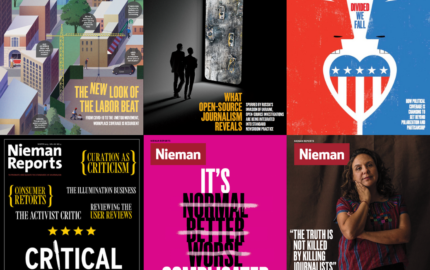From the assistant editor
What would you do if you knew TikTok was tracking your whereabouts?
That’s what happened to Forbes tech reporter Emily Baker-White while she was investigating ByteDance, the China-based firm that runs TikTok. But Baker-White’s primary concern was not that she was being monitored by the app. It was that TikTok could be cross-referencing her location with those of the TikTok employees who were her sources.
Baker-White’s story is not unique, Celeste Katz Marston writes in her latest piece for Nieman Reports. In the age of digital surveillance, the same technology that has allowed journalists to better connect with confidential sources has also made it more challenging to protect those sources’ identities. In one case, an electric company hired a private consulting firm to follow a reporter who was investigating it; many others have been targeted with Pegasus spyware from the NSO Group, an Israeli cyber-intelligence company.
Nelson Rauda, a reporter at El Faro in El Salvador, heard back from one of his sources after news broke that Pegasus was being used to target journalists: “Now I know why my wife was fired from her government job.”
Where they can, journalists are taking measures to ensure that their sources’ identities remain concealed. Many newsrooms have adopted SecureDrop and Signal as ways for sources to more securely submit tips. And many others are going completely off the grid — like writing down appointments in a physical planner and sending tips by mail — to protect confidential information.
We hope you take the time to read Celeste’s piece.
All the best,
Natalie De Rosa
Assistant Editor, Nieman Reports



